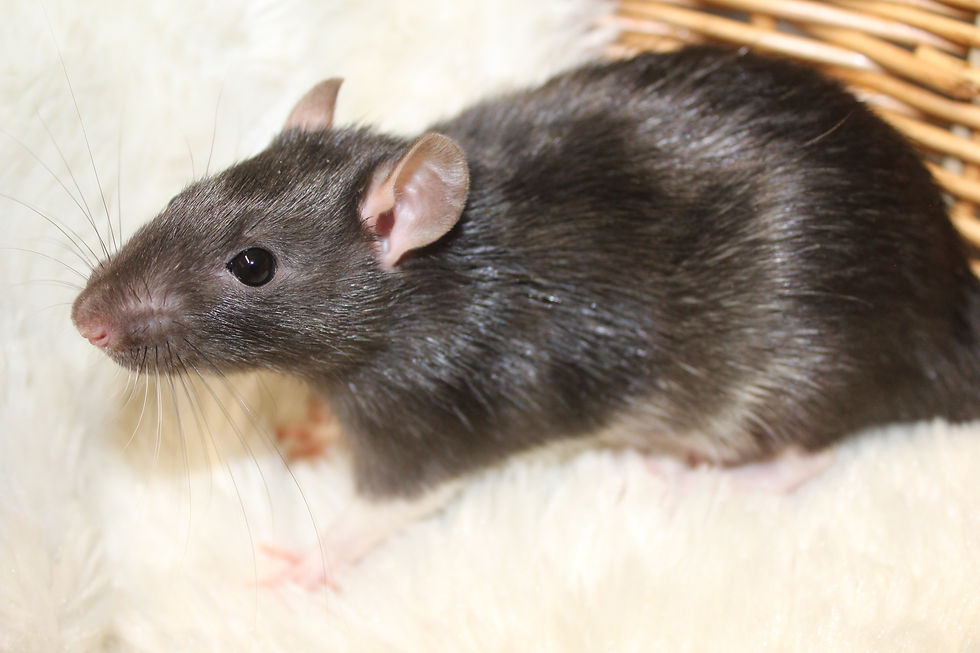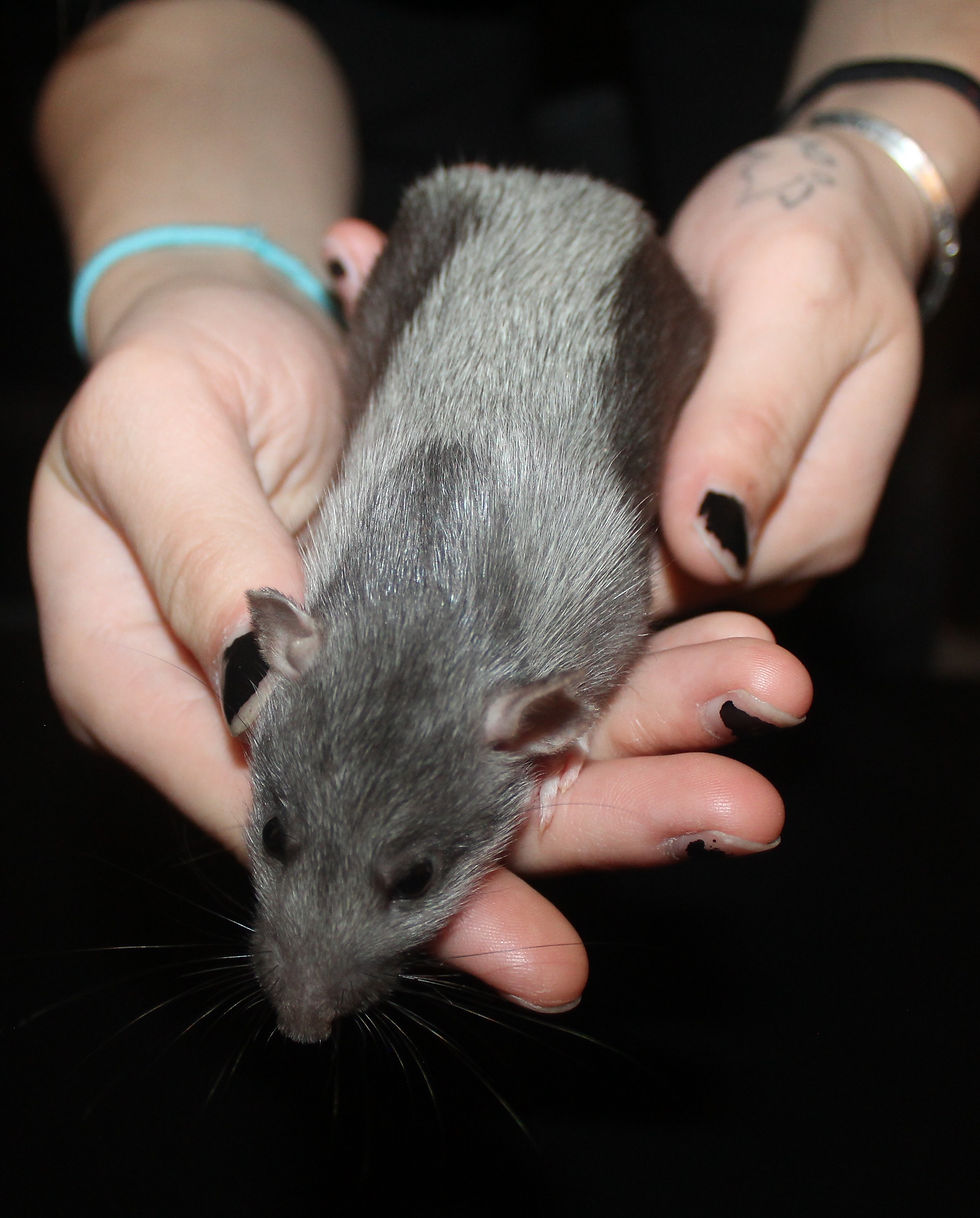How to Determine if Your Pet Rats Have Mites or Lice and Effective Remedies to Address Infestations
- StormHaven Rattery

- Jul 7
- 4 min read
Updated: Aug 29

Pet rats bring joy with their playful spirit and intelligence. Like any pet, they can face health challenges, including infestations of mites or lice. Being able to recognize these pests and knowing how to address them is key to keeping your furry companions happy and healthy.
In this guide, we will detail how to spot mites or lice in your pet rats, discuss the effects these pests can have on them, and share effective treatments to manage infestations.
Understanding Mites and Lice
To effectively tackle the issue, you should first understand what mites and lice are.
Mites
Mites are tiny parasites that thrive on the skin of rats. Their presence can lead to discomfort and irritation. Two common types affecting rats include:
Notoedres mites: Found on the skin surface, they lead to hair loss and extreme itching.
Demodex mites: Typically found in hair follicles, they can cause skin infections.
Lice
Contrary to mites, lice are larger and can be seen without a microscope. They are flat, wingless insects that feed on rat blood. Rat lice can cause severe itching, leading to excessive scratching. Symptoms include:
Scratching or grooming more than usual
Irritation around the ears, neck, and back
Recognizing the differences between mites and lice can help you identify issues quickly and choose the right treatment method.
Identifying Symptoms of Infestation
When looking for signs of infestation, observe your rats closely. Key symptoms include:
Excessive Scratching and Grooming
If you find your pet rat constantly scratching or grooming, it’s a sign they might have mites or lice. Watch for their paws being used to scratch at specific areas on their body.
Hair Loss and Skin Irritation
Rats suffering from these infestations may experience hair loss due to irritation. Look for patches of bare skin, thinning fur, and signs of redness or inflammation. For example, an infested rat might lose fur on its back or along the belly, revealing irritated skin.
Visible Parasites or Eggs
While mites are usually too small to see, lice may be visible. Check around areas like the ears and neck for signs of lice or white eggs called nits. If you notice small white specks near the skin, these could indicate a lice infestation.
Changes in Behavior
Infestations can lead to significant changes in behavior. If your once-active rat is suddenly lethargic or seems distressed, discomfort from parasites could be the cause.
Skin Infections
Scratching can lead to secondary infections. If you notice sores, pus, or crusty areas on your rat’s skin, this is a serious sign that warrants immediate attention from a veterinarian.
What to Do If Your Rats Have Mites or Lice
If you've confirmed the presence of mites or lice, acting quickly is essential. Here’s how you can address the situation:
1. Confirm the Infestation
Before starting treatment, consult a veterinarian who specializes in small animals. They can diagnose whether it’s mites or lice.
2. Quarantine Your Affected Rats
Keep the infested rats isolated from healthy ones. This helps contain the problem and prevents spreading the parasites.
3. Thoroughly Clean the Environment
Pests thrive in dirty areas. Clean the cage and surrounding space thoroughly:
Remove all bedding, toys, and accessories. Wash them in hot water.
Disinfect the cage with pet-safe cleaning solutions.
4. Treating Mites
If your rats have mites, your veterinarian might suggest:
Topical treatments: Use medicated shampoos or ointments designed for mites. These can help soothe itching and eliminate pests.
Ivermectin: A commonly prescribed medication for treating mite infestations in rodents, it can be administered orally or via injections.
5. Treating Lice
For lice infestations, consider:
Lice shampoos: Over-the-counter options can work well but ensure they are specifically safe for pets and not too harsh.
Ivermectin: This medication can also be effective for lice, typically prescribed by your veterinarian.
6. Monitor Progress
Keep an eye on your rats after starting treatment. Look for reduced itching, regrowth of fur, and overall improvement in behavior. If symptoms do not improve or worsen, consult your veterinarian for further guidance.
Preventing Future Infestations
Taking steps to prevent future issues is as important as treating current ones. Consider these strategies:
Regular Grooming
Groom your pet rats regularly. This not only keeps their fur clean but also helps you spot any signs of mites or lice early.
Maintain Clean Habitats
A clean living space is crucial for preventing infestations. Change bedding often and disinfect their enclosure regularly to hinder pests.
Quarantine New Additions
Before introducing new rats to your home, quarantine them for a few weeks. This helps to ensure they are not carrying any pests that could infect your current pets.
Vet Check-ups
Book regular vet appointments for your rats. Early detection of issues helps to avoid more significant health problems later.
Caring for Your Pets
Owning pet rats involves more than just feeding and housing them; it also requires monitoring their health. Recognizing signs of mites and lice can help you act quickly, preventing discomfort for your furry friends.
By maintaining cleanliness, grooming regularly, and being vigilant about their health, you can protect your pets from these common pests. If you are ever in doubt, don't hesitate to consult your veterinarian for advice and treatment tailored to your pets' needs.



Comments